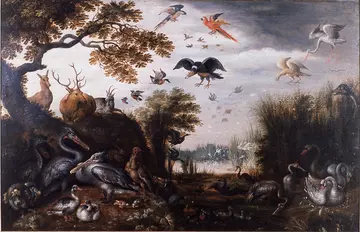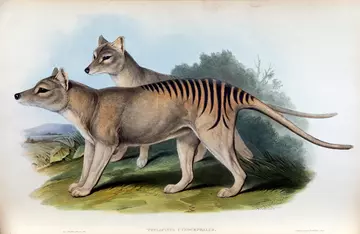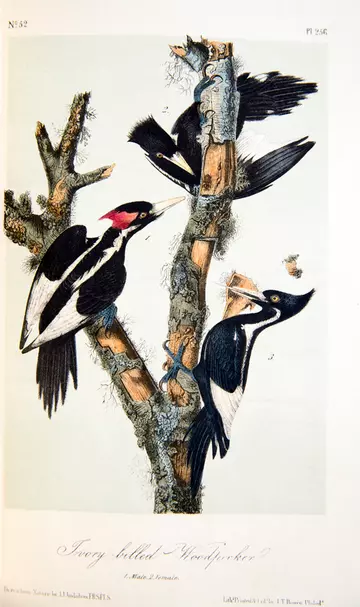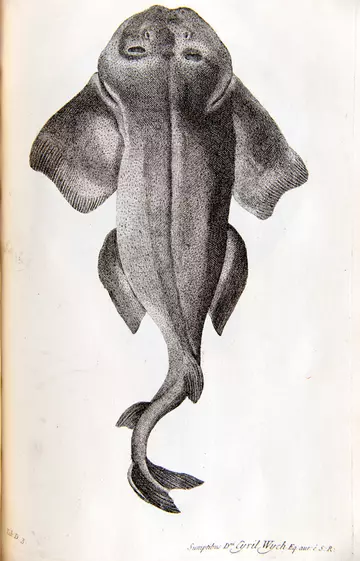
Extinct species history
Sadly illustrations sadly play an important role in understanding extinct species, as physical evidence is often sparse and incomplete. These illustrations help us understand the life and behaviour of iconic extinct species like the dodo and Tasmanian tiger, whilst informing our conservation of some of the most endangered species on earth today.
Dodo illustrations
The dodo is thought to have become extinct in 1662 so this image and description were published following the extinction of this bird - in Volume 4 of Gleanings of natural history, exhibiting figures of quadrupeds, birds, insects and plants, &c., most of which have not, till now, been either figured or described ... by George Edwards. London : Royal College of Physicians, 1758-1764.
I was puzzled as to why the dodo is accompanied by a guinea pig, they came from very different parts of the world and would not meet in the wild. In the published text George Edwards explained that he used the guinea pig to help with a sense of scale to show the large size of the dodo.

In ZSL Library we do have on permanent display an original painting of a dodo painted from life by Roelandt Savery. It is a particularly unusual image as the bird is shown from the rear so you can clearly see the tail feathers. The few other paintings of the dodo from life show the bird in profile.

Passenger pigeon illustration
The Passenger pigeon is also extinct. Martha, the last passenger pigeon, died in Cincinnati Zoo on 1 September 1914. Mark Catesby saw them in huge numbers, in his eyewitness account during the 1720s `In Virginia I have seen fly in such continued trains three days successively, that there was not the least interval in loosing sight of them...’ These illustrations of a male and a female passenger pigeon are in Les pigeons par Madame Knip, née Pauline de Courcelles. - 2e éd. Paris : Knip, [1808-43].


Tasmanian tiger illustrations
These thylacine or Tasmanian tiger are lithographic prints by Henry Constantine Richter in Volume 1 of Mammals of Australia by John Gould, London : Published by the author, 1845-63. John Gould spent two years in Australia, publishing his magnificent folio volumes on mammals and birds of Australia once he had returned to the UK. Thylacine were officially declared as extinct in 1936 but we do have a 2014 book in ZSL Library in which the author asks readers to let him know of any sightings. One of the ZSL Library Team checked a few weeks ago and so far no-one has contacted him with any confirmed sightings.


Ivory-billed woodpecker
Ivory-billed woodpecker are thought to be extinct with the last confirmed sighting in 1944. This print is from Volume 4 of The birds of America, from drawings made in the United States and their territories, by John James Audubon. New York : Lockwood, 1839. ZSL does not have the most expensive book in the world – the huge (and heavy) double elephant folio of Audubon’s birds of America in which he attempted to depict the birds life size. Our edition measures 28cm in height, I am so grateful as it is much easier to handle and move!

Another of our blogs is about Mark Catesby’s landmark work, the first published book on the natural history of North America. We highlight the extinct Carolina parakeet, as well as the passenger pigeon and the ivory-billed woodpecker The last confirmed wild sighting of a Carolina parakeet was in 1910, but the last known Carolina parakeet died in captivity in 1918. Catesby also contains a description and print of a hawksbill turtle, these are now critically endangered.
The oldest book I am featuring is De historia piscium libri quatuor ... [by] Francis Willughby and John Ray, Oxonii : e Theatro Sheldoniano, 1686, containing a beautiful engraving of now critically endangered angelsharks. ZSL works with partners to secure the future of angelsharks across their range.

The hihi stitchbird is classed as vulnerable by the IUCN and listed as nationally endangered by New Zealand’s (NZ) Department of Conservation (DOC). This illustration by John Gerrard Keulemans is in A history of the birds of New Zealand – 2nd ed., by Walter Lawry Buller, London : by the Author, 1888. ZSL’s Institute of Zoology has been instrumental in a reintroduction projects for these birds.

Hihi conservation
Hihi conservation
How this tiny bird is helping reframe wildlife conservation translocation programmes globally.
My final rare species to feature in this blog is the snail Partula nodosa which is extinct in the wild. ZSL has been involved in a conservation breeding and reintroduction programme for this species Unfortunately I have not been able to include the illustration in Studies on the variation, distribution, and evolution of the genus Partula : the species inhabiting Tahiti by Henry Edward Crampton. Washington : Carnegie Institution, 1916. This landmark work depicts and describes the wide diversity of these snails at that time providing a baseline. Comparing this information to later surveys showed that the populations had decreased dramatically and conservation actions were needed. The volume will be on display in ZSL Library throughout the rest of 2019.
